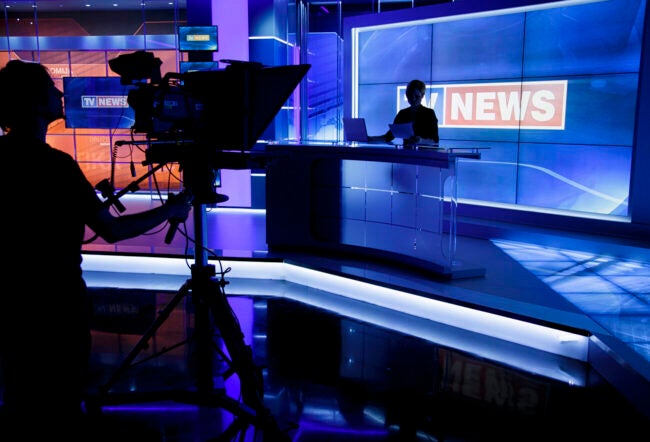A U.S. Supreme Court case over the legitimacy of a credit card issuer’s terms of business with its merchant establishments is reverberating far and wide. Among others, it is rattling technology companies — including Google, Facebook and Amazon — that have business models involving disparate sets of customers.
The case prompting all those fears – Ohio v. American Express – which the Supreme Court heard on February 26, attempts to reverse a September 2016 ruling by the U.S. Court of Appeals for the Second Circuit that went in favor of American Express. At the core of the issue are so-called “anti-steering” restrictions that Amex imposes on merchant establishments, disallowing them to “steer” customers to using cards such as Visa, MasterCard or Discover that charge lower merchant fees than Amex. The merchants would typically do that by offering customers discounts on their purchases, or in essence, “sharing” what they would save in merchant fees if the customers use a lower-fee card such as a Visa or MasterCard.
Knowledge at Wharton discussed the larger implications of the case with Herbert Hovenkamp, a professor with a joint appointment at the University of Pennsylvania Law School and Wharton, and Geoffrey A. Manne, a founder and executive director of the International Center for Law and Economics (ICLE) in Portland, Ore. They shared their insights on the Knowledge at Wharton show on SiriusXM channel 111. (Listen to the podcast at the top of this page.)
The original case dates back to October 2010, when the U.S. Department of Justice in the Obama administration filed suit against Amex, Visa and MasterCard on grounds that their anti-steering restrictions on merchant establishments were anti-competitive. They had begun imposing such restrictions to protect their markets from Discover card, a relatively newer entrant to the credit card market that offered merchants lower fees.
In any event, Visa and MasterCard settled the case with the Justice Department, but Amex persisted. The government won in the United States District Court for the Eastern District of New York in February 2015, but lost in the Second Circuit ruling in September 2016. The Trump administration decided not to pursue the case, but later joined the State of Ohio, which as the plaintiff has several other states on its side.
Bid to Correct ‘Two Mistakes’
The ruling of the Second Circuit is based on “two mistakes” it committed, according to Hovenkamp, who is an expert in antitrust law. One, it recognized as “a relevant market” a combination of the cardholder side and the merchant side. “It put two non-competing products together into a ‘relevant market,’ which is contrary to everything we know about what the scope of a market is for antitrust [cases],” he said. A ‘relevant market’ should have competing goods and not goods that operate as complements to each other or in some other relationship, he explained.
Two, the Second Circuit required the plaintiff, or the State of Ohio and others, to show both the burdens and that the offsetting benefits were not enough to offset those burdens, Hovenkamp continued. In other words, it had to show both the quantity of the harm and also the offsetting quantity of the benefit and show that the harm exceeded the benefit. “That is contrary to a long history of antitrust under the ‘rule of reason,’ which says that we try to avoid balancing those two things whenever possible,” he said. Usually, the “rule of law” requires the government to show the harm, and the defendant, or American Express, has to show the offsetting benefit, he explained.
Why Tech Companies Are Worried
Manne, who is also a distinguished fellow at Northwestern Law School, explained why companies like Amazon, Google and Uber might be worried about the outcome of the Supreme Court decision. “The fear is if you only look at one side of these two-sided markets, or put another way, you look at [one] part of the transaction, there’s a risk that you will see what looks like prima facie anti-competitive harm — whether that’s in the form of high prices without increasing output or some kind of a restraint that looks problematic,” he said.
Technology companies such as Google or Facebook charge prices on one side of their markets, say to advertisers, and use that revenue to subsidize the creation and maintenance of the product itself, which they then give away to consumers, he explained.
“The fear is if you only look at one side of these two-sided markets, there’s a risk that you will see what looks like prima facie anti-competitive harm.”–Geoffrey A. Manne
According to Manne, the technology companies have a “valid concern” that if only side of the transaction is considered, “the courts might be inclined to see supra-competitive pricing [or pricing that is higher than in a competitive market] in one instance or potentially predatory pricing in the other instance.” On the other hand, “if they looked at the issue holistically, they would realize that this is actually an efficient pricing scheme overall, even though again if you look at it in isolation, they might be able to find some problem,” he added.
Against the backdrop of that debate, Manne offered the example of Amazon’s Prime membership as one that could be seen as questionable. Amazon Prime members get access to a host of benefits including free shipping. But the free shipping applies only to merchants that have opted into a program through which Amazon handles their shipping for them. “Here, the concern would be that if you looked only at the interaction between Amazon and these merchants, it looks like Amazon is perhaps effectively extracting payment from merchants that are supra-competitive, because they foreclose access to this massive part of the market unless the merchants pay an entry fee,” he said. “But the choice here is fundamentally made by the by the consumer. He’s the one who decides whether or not he’s going to enter into the Amazon Prime program in the first place.”
Now, as the Supreme Court is hearing the case, it will decide on the applicability of the “rule of reason,” according to the court blog. It will determine whether it is sufficient for the government to show that Amex’s anti-steering requirements stifle price competition in order to prove its anti-competitive effects. In that case, it would be the responsibility of Amex to show any pro-competitive benefits from its anti-steering provisions.
Not surprisingly, numerous amicus curiae briefs have been filed to support both sides of the argument, such as a group of 28 professors of antitrust law for the petitioners (Ohio) and a technology industry trade group for American Express. “Unless the Supreme Court rejects the Second Circuit’s approach, it will risk immunizing dominant platforms from effective antitrust review, at the very moment when they most need it,” wrote Lisa Khan of the Open Markets Institute in an op-ed article last week in The New York Times. “Indeed, the reason that the tech giants are lining up behind the Second Circuit’s approach is that – if ratified – it would make it vastly more difficult to use antitrust laws against them.” The Open Markets Institute is among those that has filed an amicus curiae brief in the case.
Crafting a Solution
According to Hovenkamp, it is possible for the Supreme Court to find a way that works for the technology companies, and yet is not anti-competitive. “I don’t think tech companies including Google, Amazon, Uber or Lyft would really be injured by a well-crafted, narrowly-written opinion, basically reversing the [ruling of the] Second Circuit,” he said. But he worried about the potential for overreach. “The danger with these kinds of cases is that [the court rulings] frequently go further than they need to go. And there’s always some concern about what that might produce.”
“I don’t think tech companies including Google, Amazon, Uber or Lyft would really be injured by a well-crafted, narrowly-written opinion.”–Herbert Hovenkamp
Hovenkamp said a final ruling in the case would also ideally consider all revenue sources of a company and its particular business model. “For example, the fact that Android is a Google product that is free to customers does not mean that Google is engaged in predatory pricing,” he said. “It simply means that Google’s business model calls for revenue from other sources. So Android is bundled with Google search and search is bundled with advertising, and that’s where Google picks up its revenue. That is the paradigm simple case of two-sided markets where you look at revenue impact on both on both sides. I don’t think anything but a very incompetent Supreme Court decision would ignore those [aspects].”
According to Manne, “The current system could often get it right because the defendant does have the ability to demonstrate pro-competitive benefits that outweigh the identified harm.” However, things could play out unfairly as well, he noted. “The very nature of burden-shifting is to put a thumb on the scale at various points in the process. If you’re systematically allowing plaintiffs to make out their prima facie case on the basis of reference to conduct that, if properly understood, is rarely if ever anti-competitive, and that it is only anti-competitive when viewed in isolation, you’ll end up with more erroneous outcomes.”
All things considered, it’s best to be prepared for the worst-case scenario, Manne suggested. “It doesn’t mean that you always get it wrong. But you have to assume that you would more often get it wrong, and the costs of litigation will be higher. Those are the things that these [technology] companies would probably like to avoid.”



